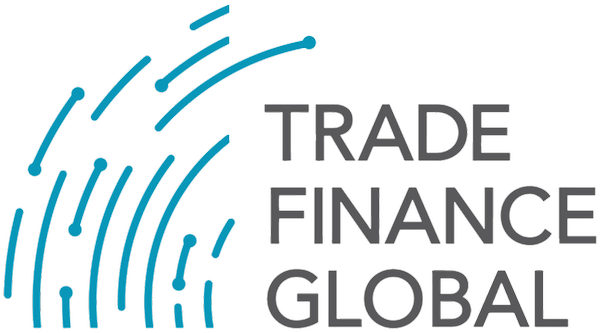- Criminals thrive when the environment they exist within is busy with turbulence.
- Sanctions and tariffs have led criminals to misdeclare or misinvoice goods and conceal the origins of shipments.
- AI-driven monitoring could help reduce how long criminals have to act.
Tariff wars and protectionism are opening lucrative new avenues for trade-based money laundering (TBML): and traditional compliance models can’t keep pace. Escalating tariffs and tightening economic sanctions have thrown global supply chains into turmoil, forcing businesses to rapidly shift trade routes and redraw commercial relationships. These rapid adjustments create blind spots that criminals waste no time exploiting.
Historically, waves of heightened tariffs correlate directly with a spike in TBML activity, and current trends are no different. When legitimate channels become restricted or prohibitively expensive, illicit networks thrive. Smuggling rings and fraudulent invoicing schemes proliferate, embedding themselves within the gaps left by fragmented enforcement. And TBML poses a particular problem: it is now estimated to be 10 times more efficient than other laundering methods for moving large sums internationally.
Late 2023 provided a vivid case study: despite sanctions, reports emerged of luxury cars and restricted microchips slipping into Russia through intermediaries in the UAE, China, and Central Asia. Now, with major economies again embroiled in escalating tariff battles, similar patterns are almost certain to repeat, particularly in sectors bearing the brunt of retaliatory duties. If compliance teams continue to rely on outdated detection methods, financial criminals will only accelerate their exploitation of an increasingly porous trade environment.
Governments have responded with aggressive sanctions. The US issued 2,275 new designations in 2022 and added another 2,500 in 2023, a dramatic increase compared to the 743 designations in 2021. While these measures are intended to cut off financial channels for criminal networks, they also encourage more creative evasion tactics. Goldman Sachs has warned that trade policy uncertainty is reducing investment and slowing economic growth, further disrupting supply chains in ways that criminals exploit.
For financial institutions (FIs), the warning signs are clear. When restrictions tighten, criminals do not stop trading. They simply adapt, using TBML techniques to move funds under the radar.
How TBML thrives in a protectionist economy
TBML is a complex and highly adaptable form of financial crime. Unlike traditional money laundering, which involves funnelling illicit money through banks or cash-based businesses, TBML hides dirty money within legitimate trade transactions. Criminals take advantage of sanctions and tariffs by misdeclaring goods, manipulating invoices, and routing shipments through third countries to conceal their origin.
Classic methods include under- or over-invoicing, disguising high-value goods as lower-value items, and creating fake entities to serve as intermediaries. Trade diversion is another common tactic, where goods officially destined for one country are quietly rerouted to a restricted jurisdiction.
Gold-plated iron bars labelled as solid gold or vast shipments of silica sand that never officially leave a country’s records are just some of the creative methods used to manipulate trade flows. Or take the Black Market Peso Exchange which remains one of the most well-known TBML schemes, originally used by drug cartels to move proceeds between the US and Latin America.
Trade misinvoicing alone accounts for a significant portion of illicit financial flows, with some estimates suggesting it represents up to 80% of capital flight from developing nations. Despite enforcement efforts, FIs and regulators struggle to keep up with the scale and sophistication of TBML operations.
Organised crime groups are highly adaptable. When sanctions block direct transactions, they shift their laundering efforts to less scrutinised markets to stay ahead of law enforcement. China and Mexico are key hubs for illicit trade, with approximately $314 billion and $237 billion in suspicious activity reports, respectively.
Given the effectiveness of AI in generating fraudulent documentation and the increasing use of deepfakes in identity fraud, it is likely that criminals are exploring emerging technologies to manipulate trade transactions. Cryptocurrencies, which have been widely used in illicit finance, also present an attractive tool for obfuscating payments linked to trade-based schemes.
If these technologies are integrated into TBML at scale, they will further complicate detection efforts, making it even more difficult for FIs to identify and prevent illicit trade flows.
How FIs can rise to the challenge
For FIs, TBML presents an urgent challenge. Criminals are too agile for traditional, rules-based compliance models, and the complexity of global trade makes TBML detection difficult without the right tools.
What’s needed is a shift toward AI-driven monitoring, real-time risk assessment, and advanced data analytics.
AI-powered analytics can process vast amounts of trade data, identifying suspicious transactions in real time. Advanced algorithms can detect anomalies in invoices, pricing discrepancies, and unusual trade routes. Real-time vessel tracking enables FIs to monitor shipments and flag irregular movements that could indicate laundering activity. AI-driven pricing analysis helps institutions compare invoice values against market rates, revealing attempts to disguise illicit funds as legitimate trade.
A unified approach that integrates AI, trade monitoring, and regulatory intelligence is crucial. FIs that fail to act risk being left exposed, facing increased compliance pressures and potential penalties.
Already, 87% of FIs are adopting AI for TBML detection, with 91% prioritising automation. Continuous monitoring and AI-enhanced analytics dramatically reduce the time criminals have to exploit compliance gaps. They also reduce the burden of false positives, allowing compliance teams to focus on genuinely high-risk transactions. But adoption must accelerate if banks want to stay ahead of the threat.
—
As sanctions, tariffs, and economic uncertainty increase, criminals will continue to innovate, forcing FIs to modernise or fall behind. The financial industry must move toward proactive, AI-driven detection, combining real-time risk identification with seamless cross-border data-sharing. Failure to act will result in more financial crime, regulatory penalties, and reputational damage.
FIs risk becoming the weakest link in the fight against financial crime. The time to act is now.





























